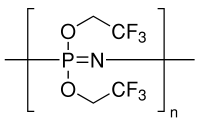Efficacy of a polyphosphazene nanocoat in reducing thrombogenicity, in-stent stenosis, and inflammatory response in porcine renal and iliac artery stents.
Christina Henn, Stefanie Satzl, Patricia Christoph, Patrick Kurz, Boris Radeleff, Ulrike Stampfl, Sibylle Stampfl, Irina Berger, Goetz Martin Richter
Index: J. Vasc. Interv. Radiol. 19(3) , 427-37, (2008)
Full Text: HTML
Abstract
It is hypothesized that the inorganic polymer poly[bis(trifluoroethoxy)phosphazene] (PTFEP) reduces stent-associated thrombosis, in-stent stenosis, and inflammatory response and stimulates reendothelialization in a porcine model.PTFEP-nanocoated and bare stainless-steel stents (316 L) were implanted bilaterally in renal and iliac arteries of 16 minipigs (1, 4, and 12 weeks follow-up durations). Primary study endpoints were thrombogenicity determined by filling defects on angiography and in-stent stenosis assessed by lumen loss on quantitative angiography (ie, percentage stenosis) and light microscopy (ie, neointimal thickness, neointimal area, area stenosis). Secondary endpoints were inflammatory response and reendothelialization evaluated by light microscopy and scanning electron microscopy (SEM), respectively.Stent placement was successful in 32 renal and 26 iliac arteries. At follow-up, there were no thrombus depositions on PTFEP-coated renal and iliac stents. Thrombus depositions were found on two of six bare metal iliac stents after 4 weeks (P = .0651). PTFEP-coated stents showed a trend toward reduced in-stent stenosis in all renal and iliac arteries at all intervals: in iliac stents, neointimal area was significantly smaller in coated stents than in bare metal stents after 1 week and 4 weeks (P = .03 and P = .001, respectively). In renal arteries, inflammation scores indicated lower inflammatory response in PTFEP-coated stents than in bare metal stents after 1 week (P = .01). After 1 week, coated and bare metal stents exhibited complete reendothelialization on SEM.PTFEP-coated stents exhibited reduced thrombus deposition and a trend toward less in-stent stenosis and inflammatory response than bare metal stents.
Related Compounds
| Structure | Name/CAS No. | Molecular Formula | Articles |
|---|---|---|---|
 |
POLY(BIS(2 2 2-TRIFLUOROETHOXY)PHOSPHAZ&
CAS:28212-50-2 |
(C4H4F6NPO2)n |
|
Properties and clinical development of a novel coating techn...
2010-01-01 [Recent Pat. Drug Deliv. Formul. 4(1) , 18-22, (2010)] |
|
A new polymer concept for coating of vascular stents using P...
2005-04-01 [Invest. Radiol. 40(4) , 210-8, (2005)] |
|
The efficacy of nanoscale poly[bis(trifluoroethoxy) phosphaz...
2007-05-01 [Invest. Radiol. 42(5) , 303-11, (2007)] |
|
Radiation grafting of hydrophilic monomers onto poly[bis(tri...
1994-09-01 [Biomaterials 15(11) , 937-43, (1994)] |
|
Polyphosphazenes as biomaterials: surface modification of po...
1993-05-01 [Biomaterials 14(6) , 430-6, (1993)] |